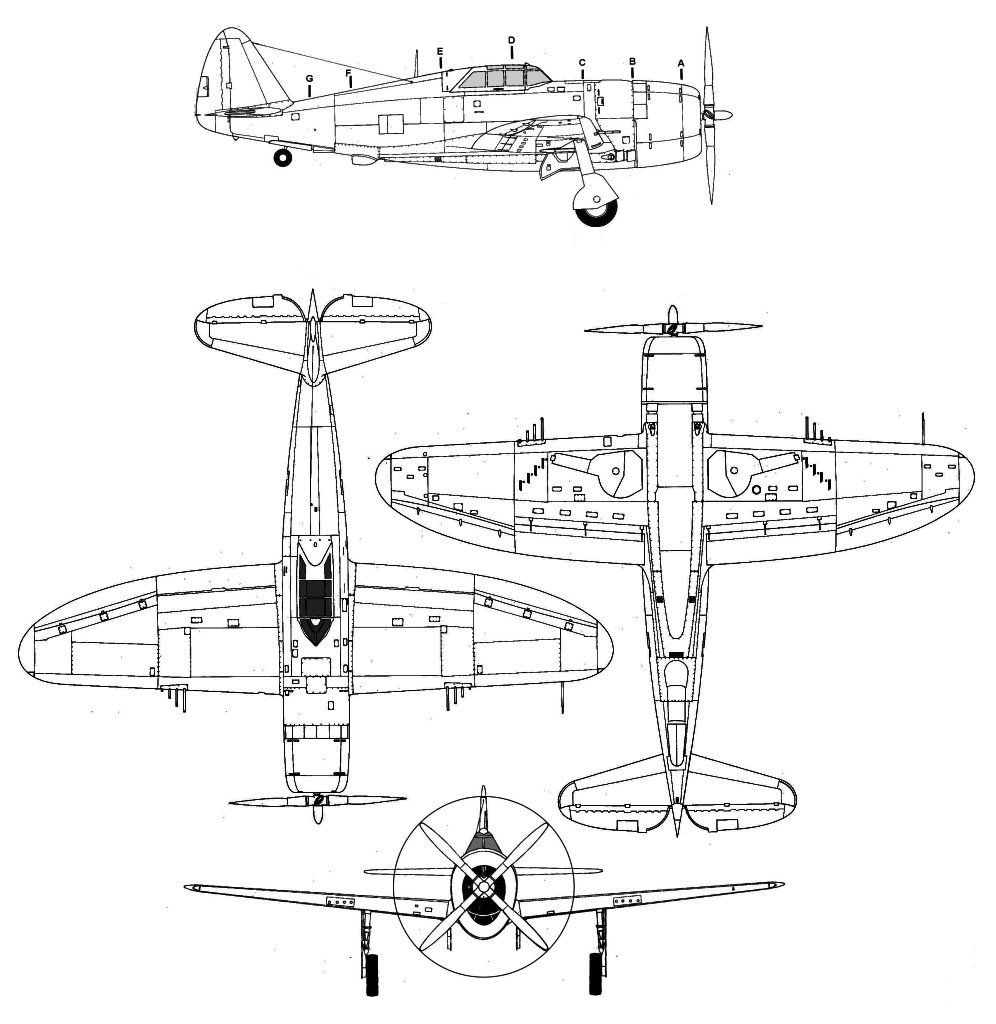An exceedingly difficult argument, the Thunderbolt was widely considered one of the toughest aircraft of the Second World War, able to carry 3,000 pounds of external ordnance, including eight .50 caliber guns.
The P-47 nicknamed the “Jug,” served as a bomber escort and ground attack aircraft during World War II. Over the course of production, the P-47Ds were greatly improved with increased climb rate and speed, greater internal fuel capacity and new wing mounts for drop tanks or bombs.

Serial Number: 44-32798
Manufacturer: The Republic Aviation Corporation
Crew: One
Engines: One Pratt & Whitney R2800 Double Wasp eighteen-cylinder radial; 2,500 horsepower
Wingspan: 40 feet 9 3/8 inches
Length: 36 feet 1 3/4 inches
Height: 14 feet 7 inches
Weight: 10,700 pounds (empty); 13,500 pounds (maximum)
Speed: 260 mph (cruising); 433 mph at 30,000 feet (maximum)
Range: 950 miles without external fuel
Service Ceiling: 40,000 feet
Armament: Eight .50-caliber machine guns and ten 5-inch rockets or 1,500 pounds of bombs
Cost: $83,000
During World War II, Hill Air Force Base maintained, repaired, rehabilitated and stored many Thunderbolt aircraft and their engines. The P-47D on display was manufactured in 1944 and served on bases all over the United States. In 2003, this aircraft was recovered from a salvage yard and brought to Hinckley Airport in Ogden, Utah, for restoration. In 2007, it was put on display at Hill Aerospace Museum.
An exceedingly difficult argument, the Thunderbolt was widely considered one of the toughest aircraft of the Second World War, able to carry 3,000 pounds of external ordnance, including eight .50 caliber guns.
The P-47 was developed as a fighter and fighter-bomber in both the European and Pacific fronts.
It is reported in the European Theater alone, some 7,000 aircraft were destroyed, with more than half being destroyed in air-to-air combat.
Fully loaded, the P-47 weighed up to 8 tons, making it the heaviest fighter of WWII.